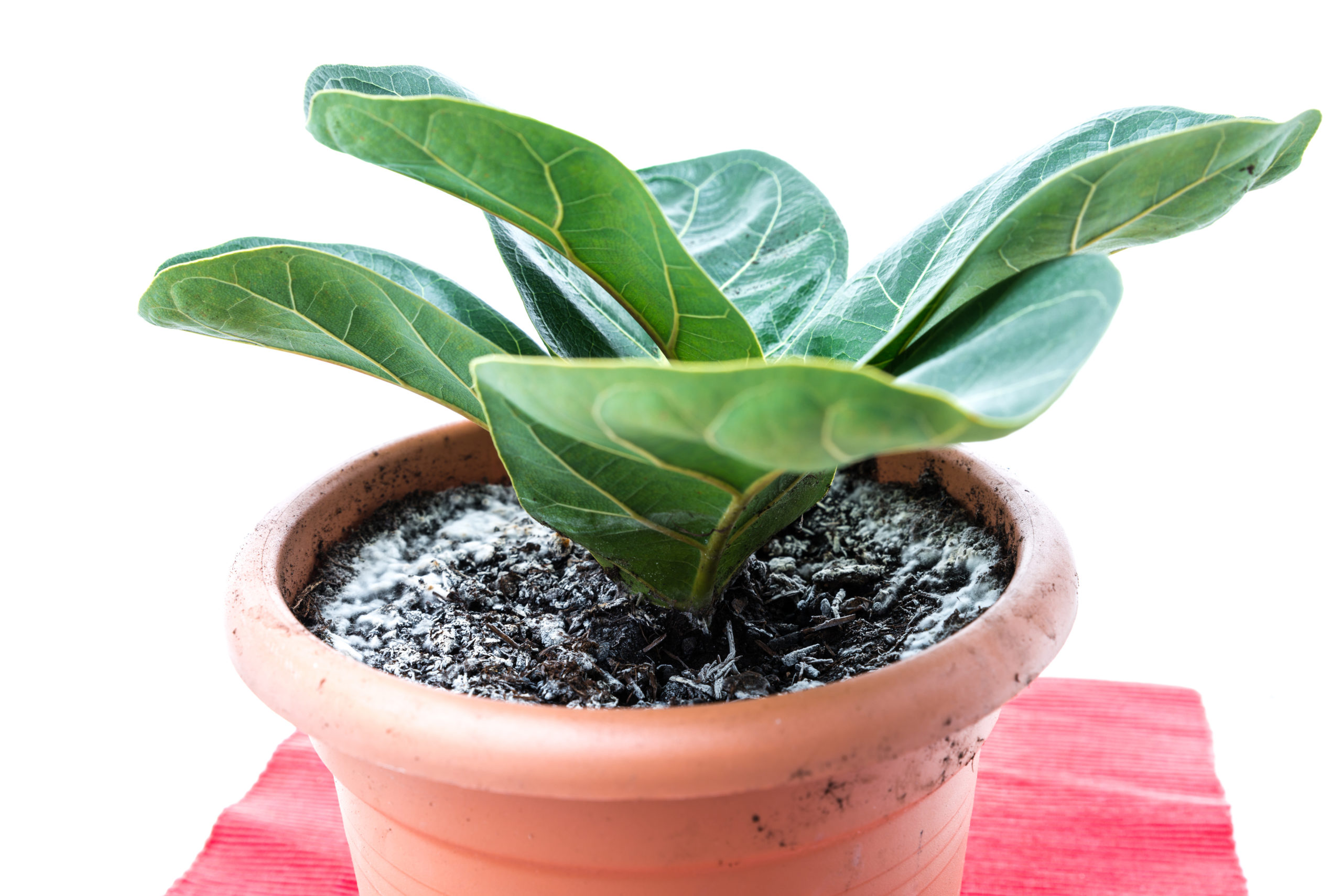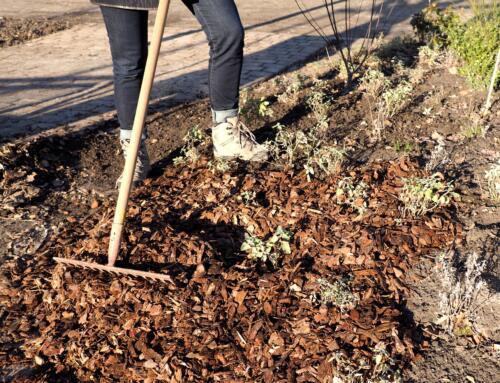A whitish or brownish covering on the soil in a flower pot can spoil the pleasure of even the most beautiful house-plant. These coverings are usually harmless, but how do they develop in the first place?
Peat-free or peat-reduced potting soils consist of varying percentages of wood fibre, bark humus and green waste compost. These feedstocks are organic materials, and will have naturally occurring fungal spores. In their respective manufacturing processes, the different materials are hygienised. This means that after the manufacturing process they are free from weed seeds and pathogens. However, they remain naturally colonised with important microorganisms (bacteria and fungi). These microorganisms hamper the spreading of plant pathogens, such as for example root rot.
High moisture levels combined with heat provide ideal conditions for fungal spores to germinate. If conditions remain good, the spores spread as mycelium throughout the entire substrate for planting. This process can start and become visible as early as in the store packaging. See also our article „Mould in potting soils“ (LINK) for further information.
Sometimes, however, the fungal spores do not germinate in the bag, but only after potting or planting when the plants have been watered several times. In this case, the conditions that encourage spore germination only exist in the flower pot. They especially affect indoor plants that are kept permanently moist or sowings in warm places. Mould infestation of plants that are grown indoors are almost always a sign of excessive water supply or waterlogging. In some cases fruiting can occur as small mushrooms. In the case of tub plants or plants grown in raised garden beds, yet another factor comes into play: the ambient air contains countless fungal spores for which the fresh potting soil is an ideal breeding ground.
Mould or minerals?
First, you want to take a close look at the covering. If it has a crystalline structure, it isn’t mould but mineral deposits from fertiliser applications and calcium-rich water. Mineral deposits are completely safe for humans and plants and can be left on the potting soil. If the sight of them bothers you, you can easily remove the hard coverings with a spoon.
By contrast, mould spores cover the soil surface like the soft fluff on mouldy bread. The fluff gives way immediately if you press it with your finger. Mould spores in potting soils are always saprophyte fungi. Saprophytes are destruents (decomposers) of dead organic material; they are present in all forest soil, where they perform important tasks. They do not infest living plant parts and are therefore completely harmless to indoor, bedding, border and other plants.
What to do to control mould infestation
A whitish or brownish mould covering that occurs only in specific spots of the substrate surface can be removed with a spoon and disposed of. You may want to cover the surface with some fresh potting soil. This usually solves the problem. Always remove fruiting bodies (cap fungi) promptly, as they serve to help the fungus spread further. You can simply remove the bodies by hand and dispose of them in the household waste.
If a larger part of the soil is affected and the soil has a mouldy smell, you want to repot the plant into high-quality potting soil. Ideally, do this in the open air to avoid inhaling too many fungal spores. Remove the mouldy soil as completely as possible. Make sure to clean the pot with a surface disinfectant or vinegar solution.
As a preventative measure, keep the affected plant on the dry side and do not water it until the substrate surface has dried off. Bottom watering using a pot saucer also helps keep the substrate surface dry. Remove any surplus water the plant has not taken up from the pot saucer within 2-3 minutes of being watered to avoid waterlogging conditions.
Is there a health risk?
Most moulds that occur on potting soil do not pose a health risk. However, if the spores of these fungi accumulate in the room air, sensitive people may experience health problems. People with chronic or allergic respiratory diseases are affected more often than average.






